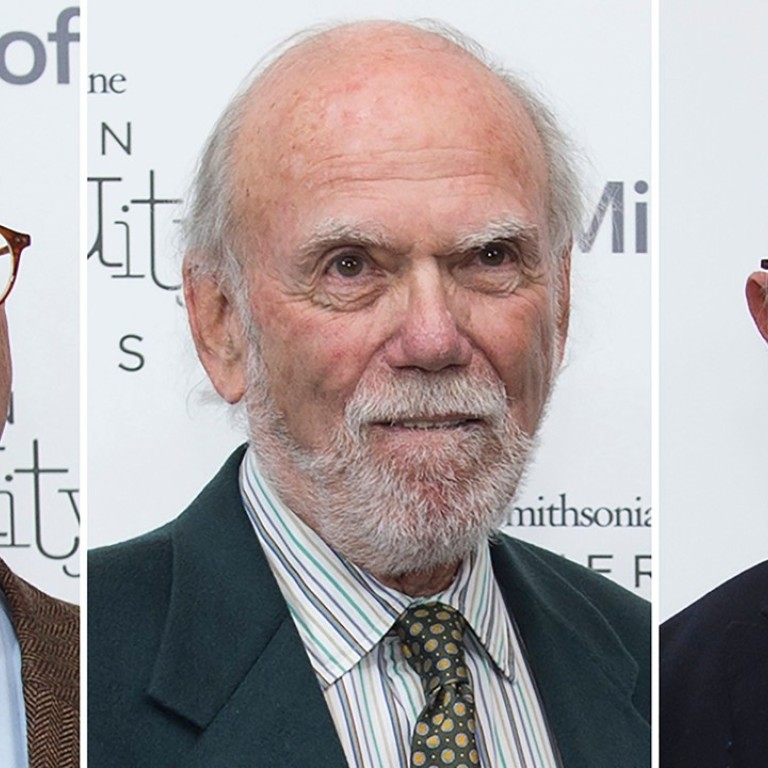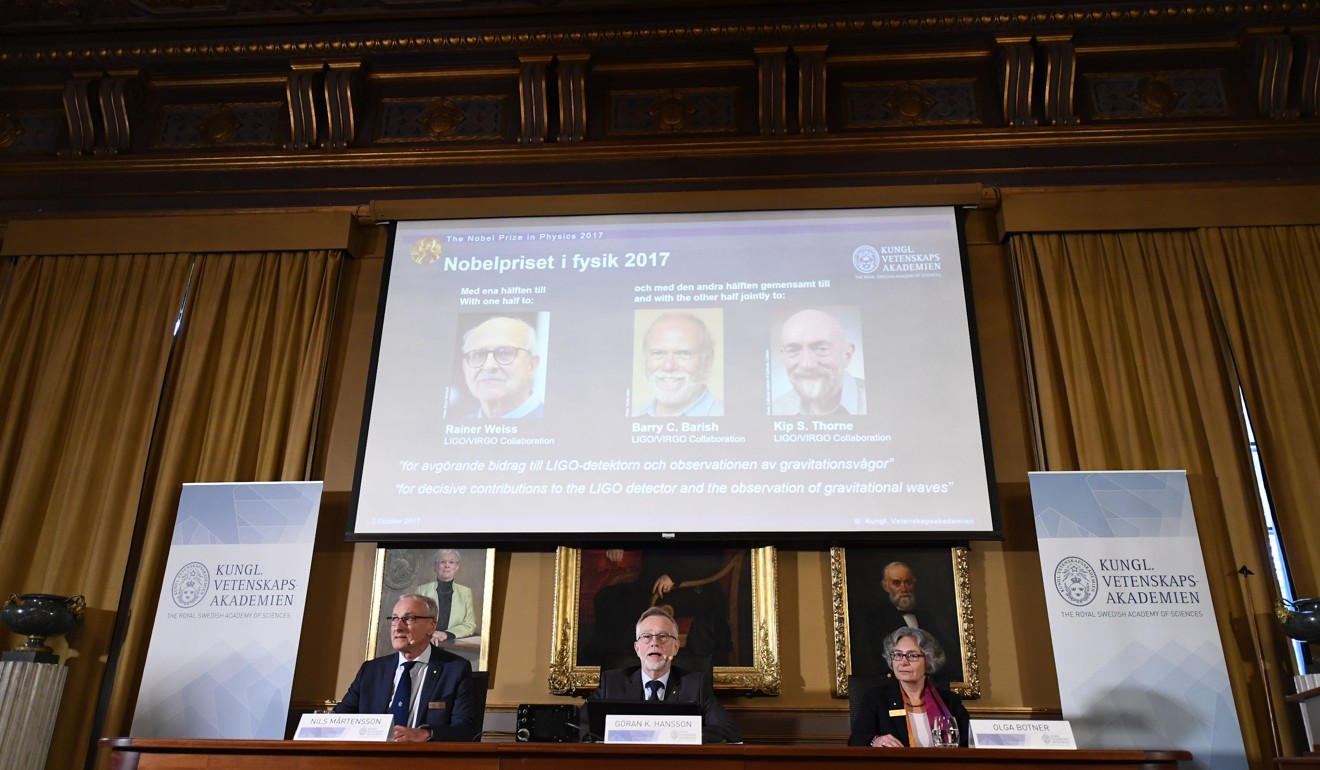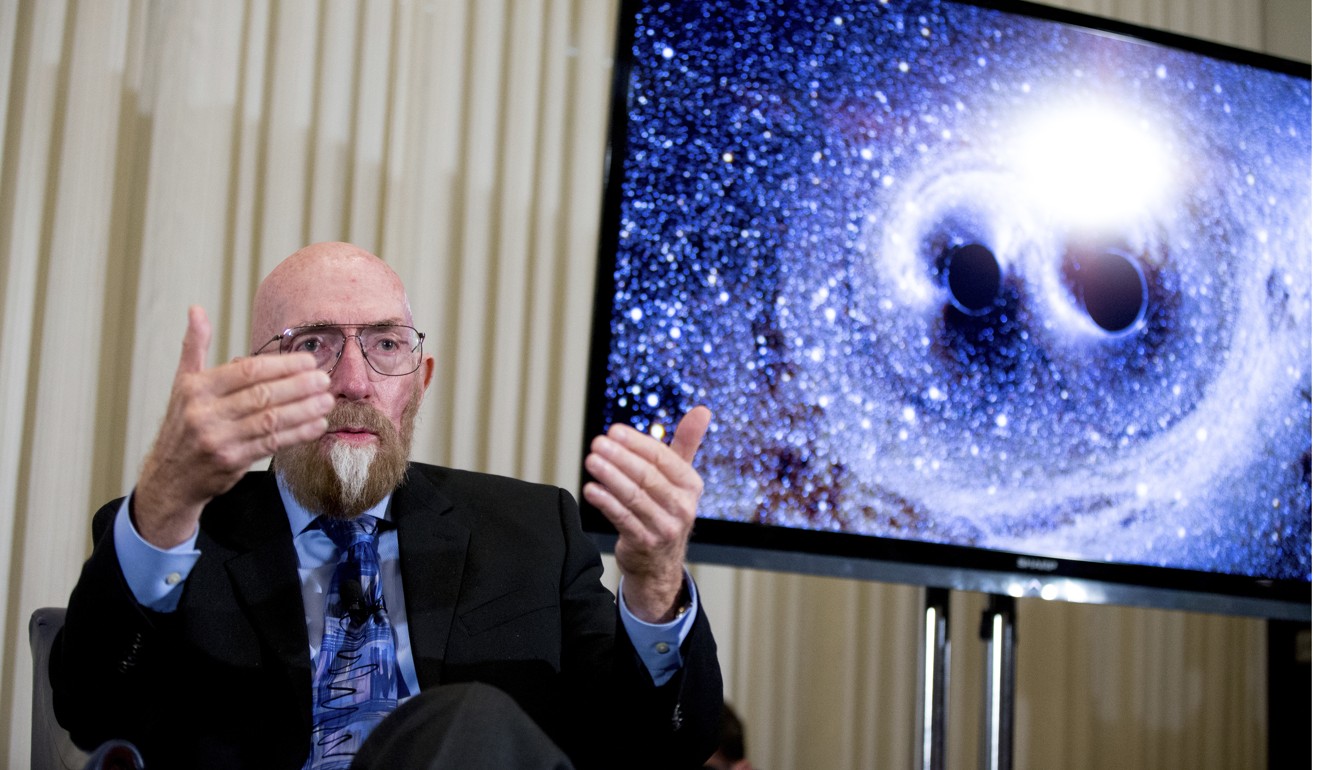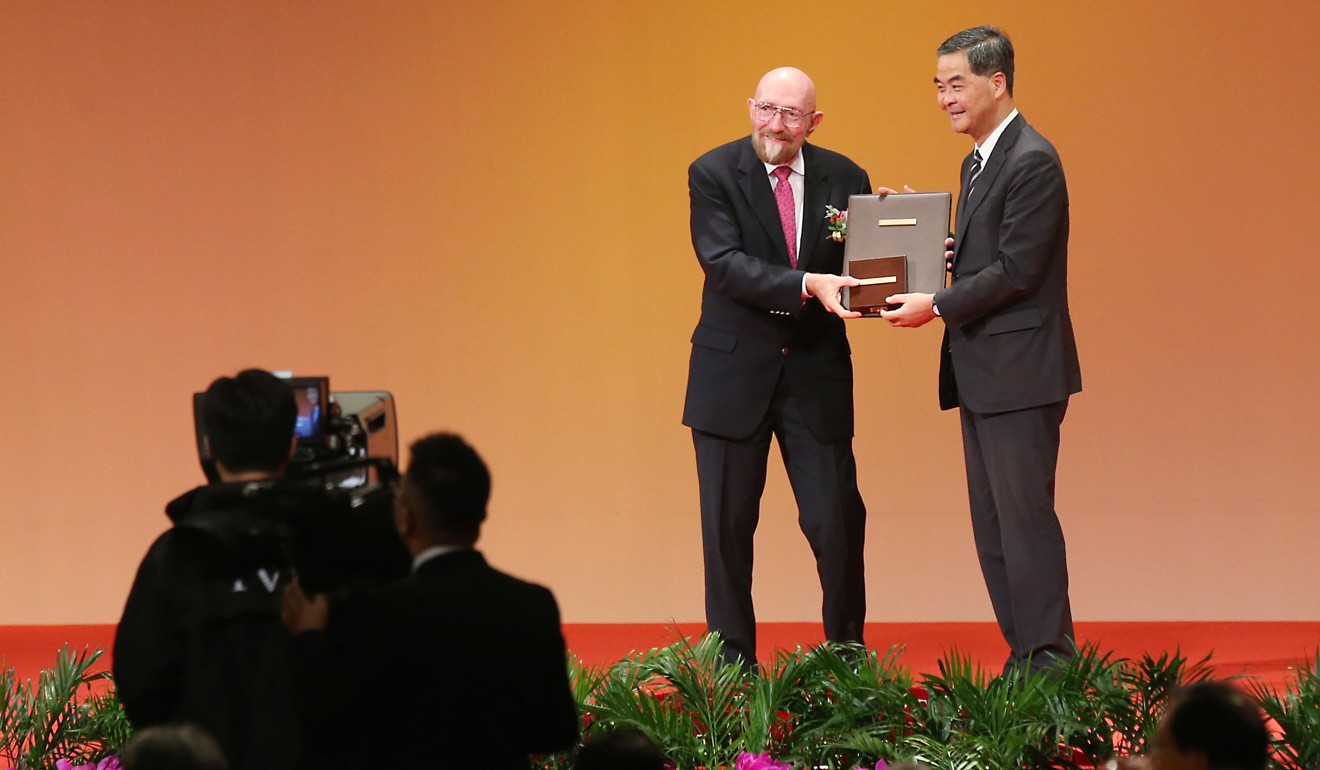
Detectors of gravitational waves win physics Nobel Prize
Three US researchers won this year’s Nobel Prize in physics for developing an observatory that made possible the detection of gravitational waves, ripples in space-time theorised by Albert Einstein 100 years ago, the Royal Swedish Academy of Sciences said on Tuesday.
Weiss was awarded half of the 9-million-kronor (US$1.1 million) prize and Thorne and Barish will split the other half.
“I view this more as a thing that recognises the work of a thousand people,” Weiss said.

The awarding of the prize came after an international team of scientists announced last year the detection of ripples in space-time from two colliding black holes.
Weiss and Thorne are pioneers of the LIGO project, while Barish took the lead in completing it.
Gravitational waves from a black hole collision 1.3 billion years ago were detected on September 14, 2015, by twin LIGO detectors in Louisiana and Washington state, the LIGO Scientific Collaboration team said in February last year.
The two black holes that slammed into each other were estimated to be about 29 and 36 times the mass of the sun.
In June, the team again detected gravitational waves from two colliding black holes on December 26, 2015.

LIGO’s L-shaped detectors use laser light split into two beams that travel back and forth down 4km-long arms. The beams are used to detect infinitesimal changes in the distance between mirrors at the ends of the arms that are caused when gravitational waves pass by the detectors.
In his general theory of relativity in 1916, Einstein postulated the existence of space-time ripples caused by whirling massive objects.
Weiss in the 1970s designed a laser-based prototype that would overcome background noise that would disturb measurements of gravitational waves. He, Thorne and Barish “ensured that four decades of effort led to gravitational waves finally being observed,” the Nobel announcement said.
The announcement said Einstein was convinced that gravitational waves could never be measured. But the laureates succeeded in measuring “a change thousands of times smaller than an atomic nucleus”.

Last year, Kip Thorne and Rainer Weiss won Hong Kong’s Shaw Prize in the astronomy category.
In an interview with the Post, Weiss described himself as more of an experimenter – a “plumber” and a maker of things.
At the same time, the Chinese University of Hong Kong said on Tuesday that its assistant professor of physics, Tjonnie Li, has been leading the only group in the city involved in LIGO’s work.
“As a young researcher, my dream is to make contributions to science that will withstand the test of time. With the 2017 Nobel Prize in Physics awarded to the discovery of gravitational waves, this dream has come to reality,” he said.
“I believe that we are only at the start of a whole new way to looking at the universe, and that many new discoveries will happen soon. I hope this inspires young students to pursue their own dreams and interests.”
Associated Press, Washington Post
